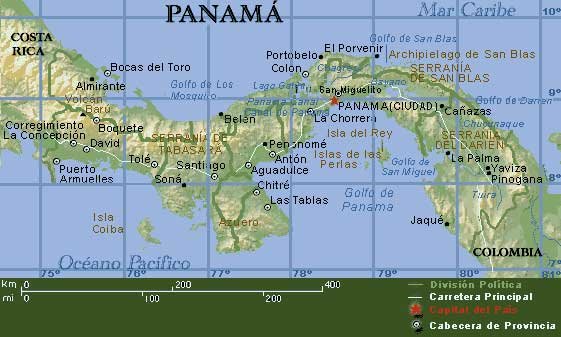
A mola is a multilayered fabric art that is used by local indiginous Kuna Yala women as the main portion of the front and back of thier blouses. The two molas making up the blouse are usually two variations on a theme, very simular in appearance but not identical.
The traditional costume of a Kuna woman also consists of a patterned cotton wrapped skirt, headscarf, arm and leg beads that cover the majority of the lower arm and leg, gold nose rings and earrings. This tradional costume can still be seen on the streets of Panama and in the Kuna Yala Comarcas -territories where the Kuna Yala live.


Molas are made with aplique and reverse aplique techniqes... all by hand. Patterns can be geometric or figural. Maroon, orange, red, and black figure promently in many molas.

Many hours go into each mola, and the ability to make a fine mola gives status to the maker. The quality of a mola is determined by such factors as
number of layers
fineness of stitching
evenness and width of cutouts
addition of details such as zigzag borders, lattice-work or embroidery
general artistic merit of the design and color combination.
number of layers
fineness of stitching
evenness and width of cutouts
addition of details such as zigzag borders, lattice-work or embroidery
general artistic merit of the design and color combination.
When Kuna women tire of a particular blouse, they disassemble it and sell the molas to collectors. Since mola panels have been worn as part of the traditional dress of a Kuna woman they often show signs of wear such as fading and stitch marks along the edges of the panels. These"imperfections" indicate that the mola is authentic and not made solely to be sold to tourists. The mola pictured with the ¨dragon head" and fish motif (shown above) shows all the signs of being originally used for a blouse.
Comercial molas are now also being made specifically for tourists. These are notably different in thier style and technique...but can also be beautiful and time consuming to make.



Mola prices range from $10-100 dollars depending on quality of work, design, age, and other factors (including where you shop). Barganing is normal, and prices can sometimes drop dramatically fast...but I try to always keep in mind that this is the live work of the woman selling. While we don´t whan prices to go up just because a tourist will pay more...I try not to haggle so hard that she doesn´t get recognition for her art. If she can´t feed her family with the price that you and I will pay sooner or later her family will provide for themselves in other ways....this would be a loss to the arts here and probably a loss to the local enviroment because most of the other ways to provide food or income are impactful on the local enviroment.
I would like to acknoledge that the above photo of a Kuna woman was stolen from the following webpage: www.wherescherie.com/newsread.php?newsid=199




1 comment:
hey guys, my name is carolina, im from costa rica, my e-mail is crv182@hotmail.com, i would like to have some info about the kuna islands. im planning to travel overthere as a backpacker, and i just need some information about location thanx!
Post a Comment